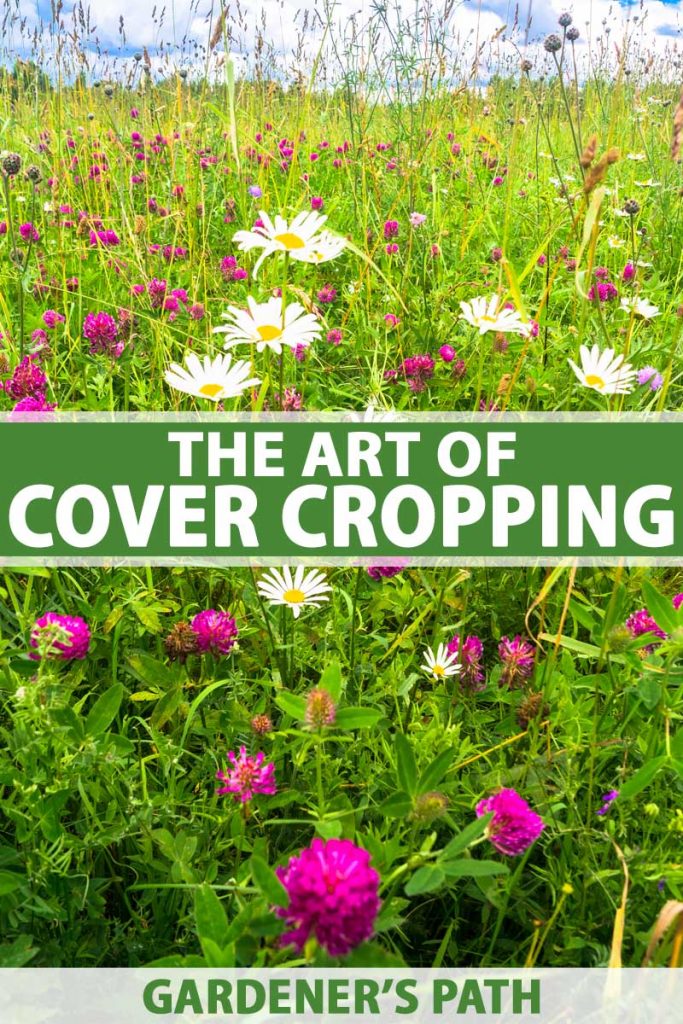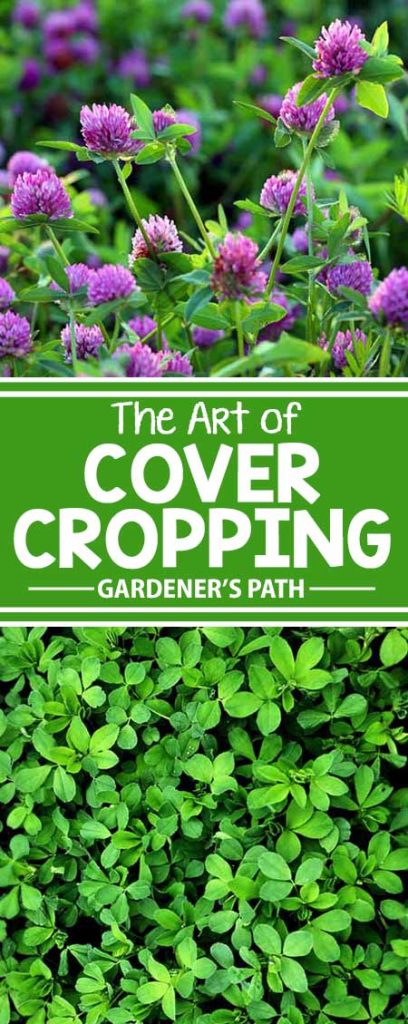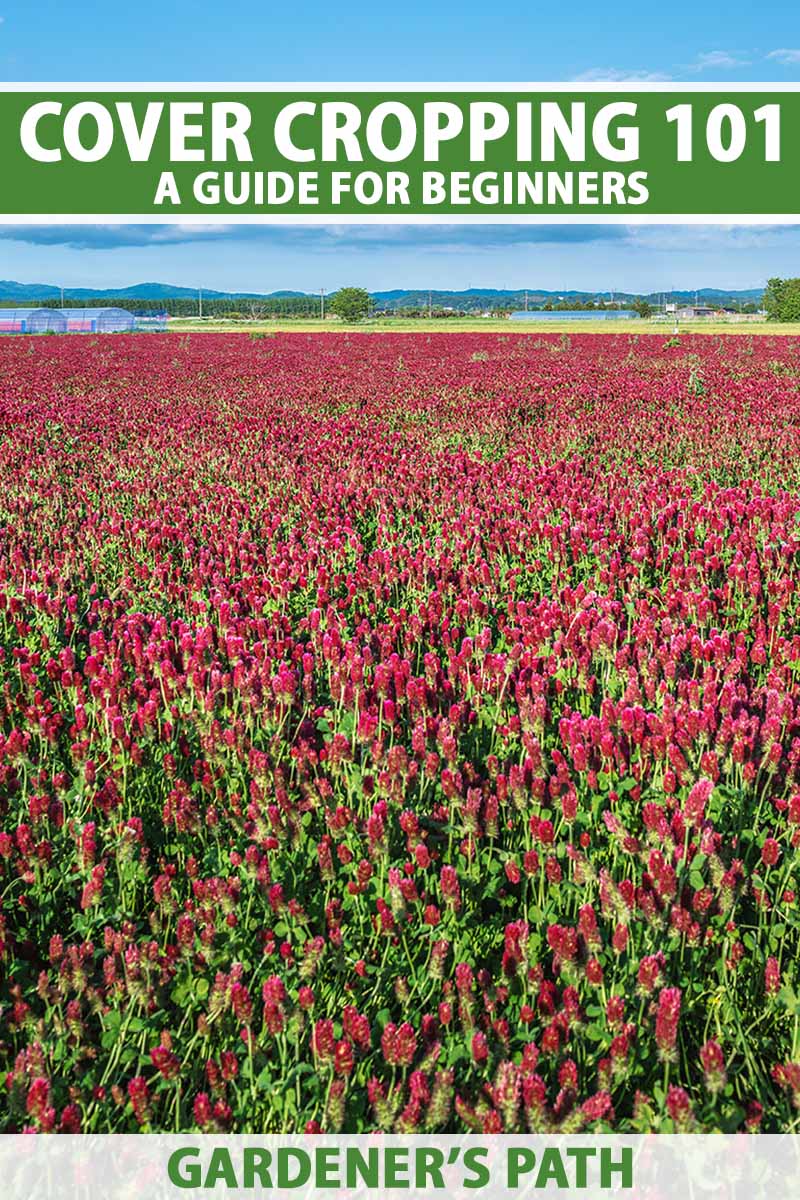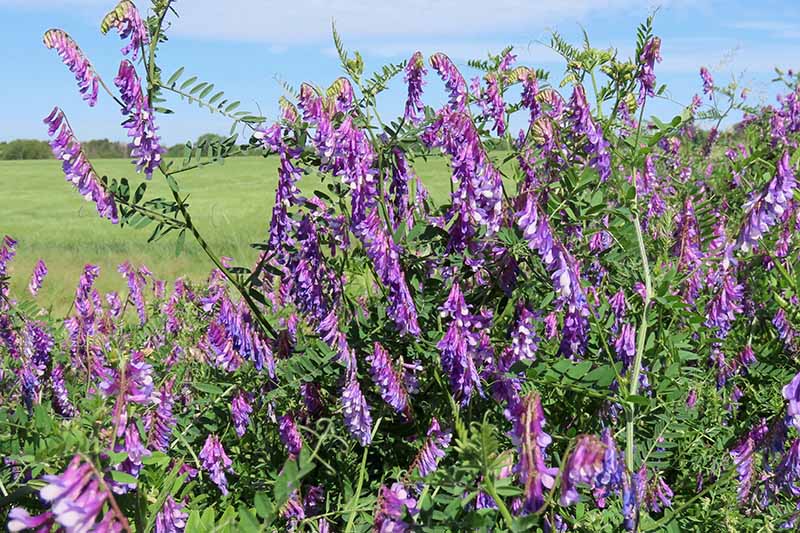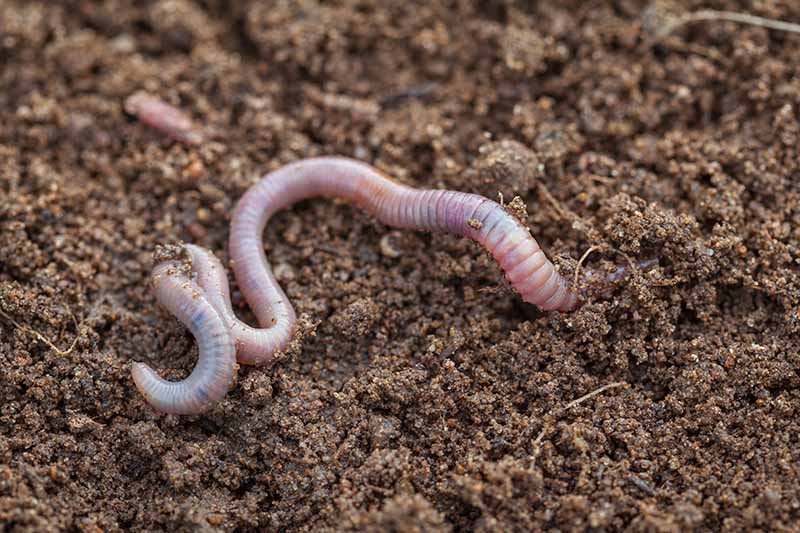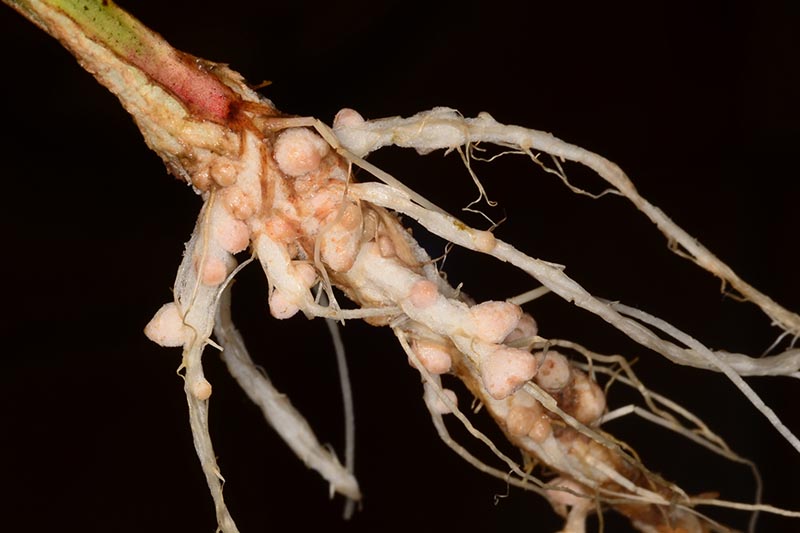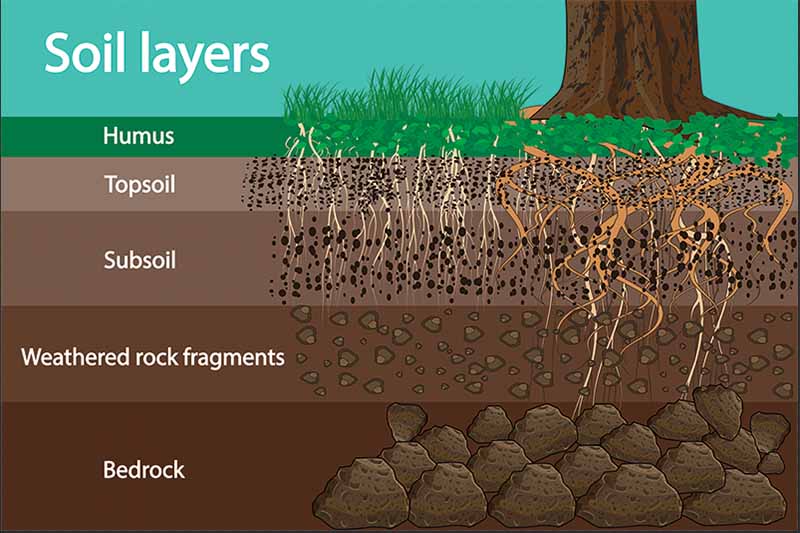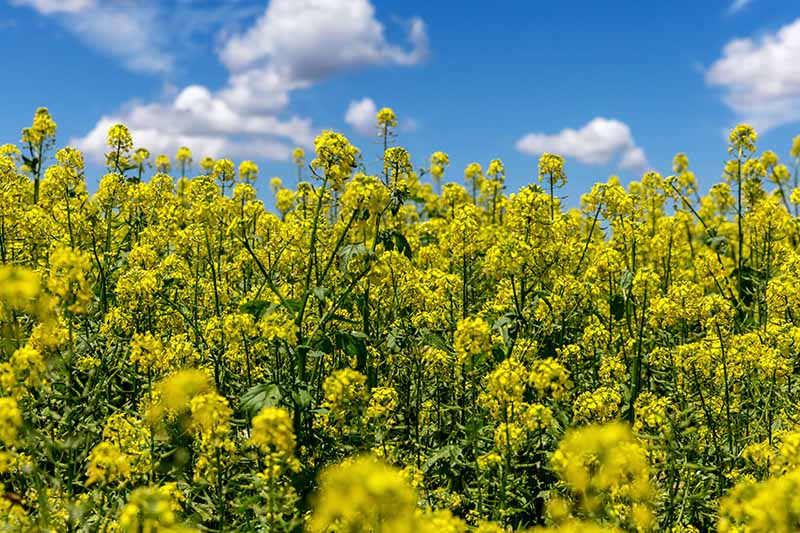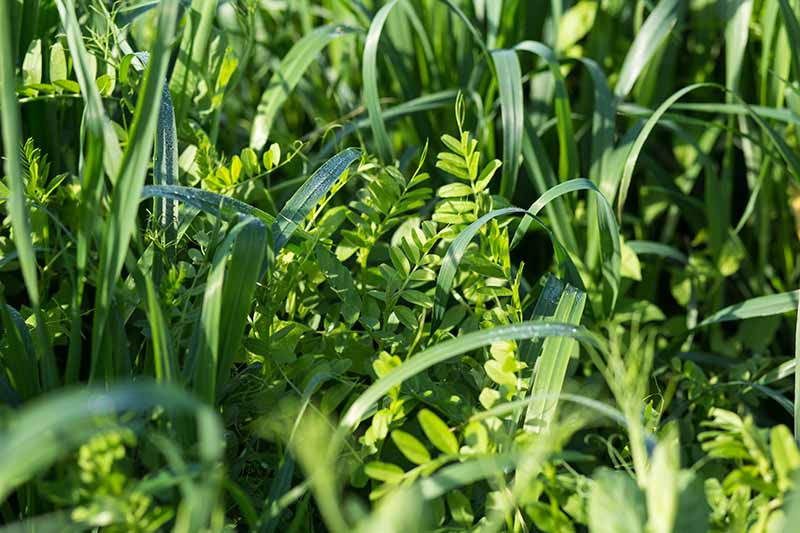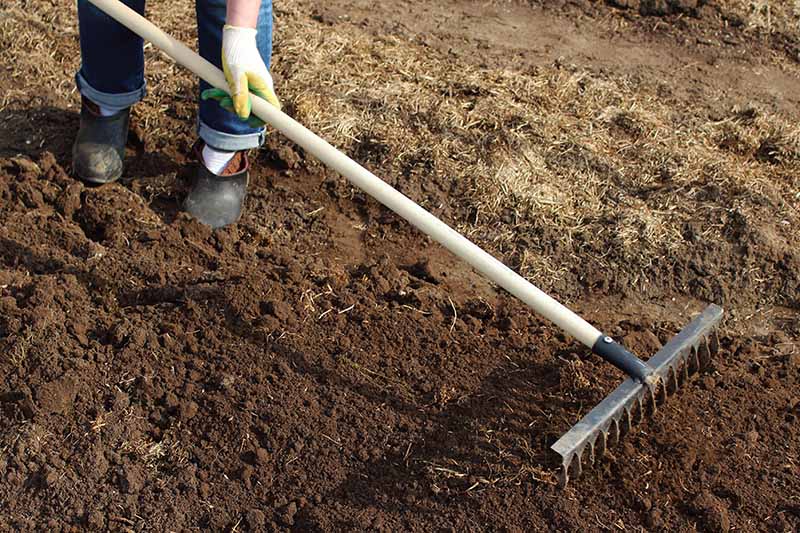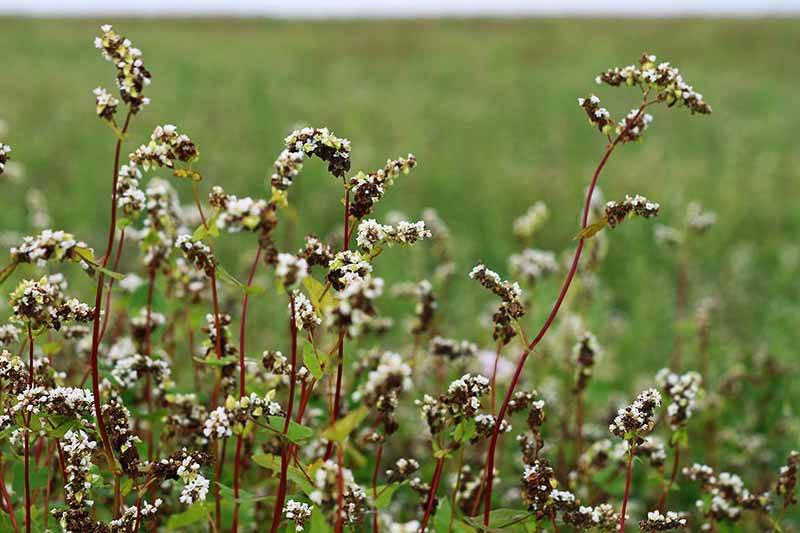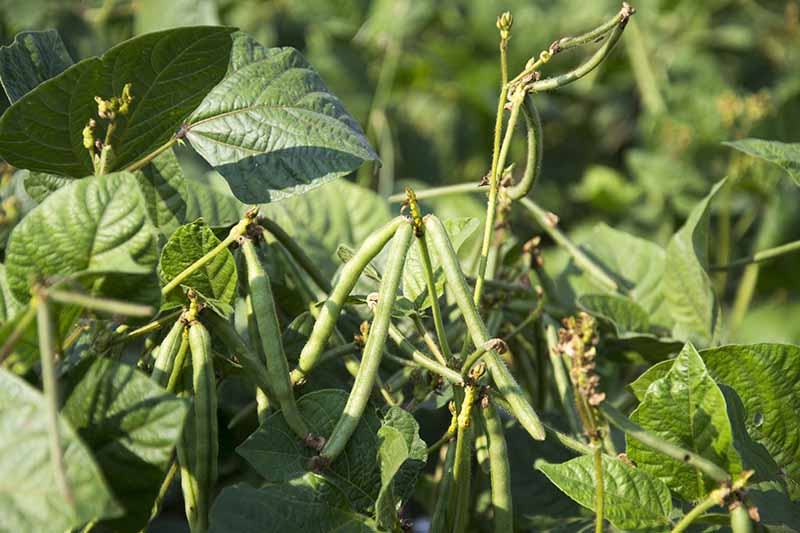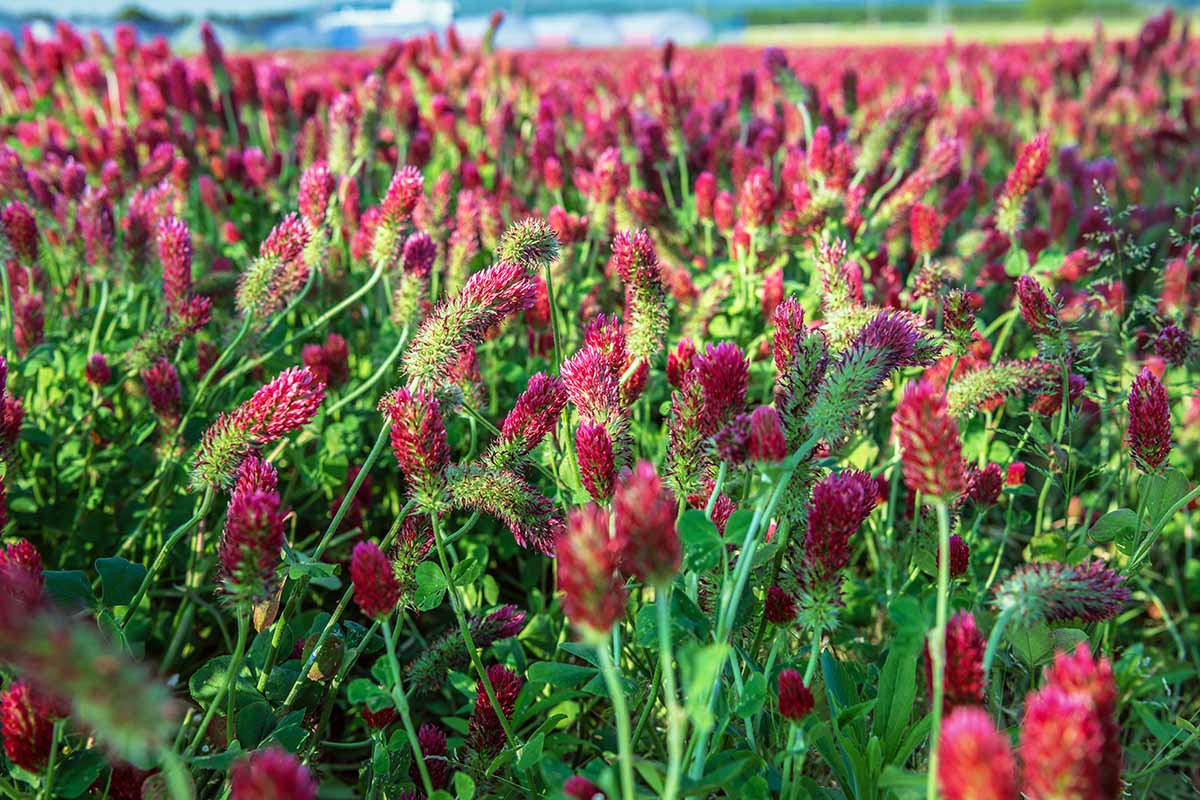It’s time to consider cover cropping. Part art and part science, it’s an environmentally friendly, rewarding way of providing your plants with natural fertilizers and nutrients, disease and pest management, and improved water penetration and retention. Cover crops are also time savers, and they help gardeners to cut down on the tough manual work of erosion control, mulching, and weeding. We link to vendors to help you find relevant products. If you buy from one of our links, we may earn a commission. This means you can make a real difference to both the health of your garden and the larger environment with the smart choice of cover cropping. It’s a natural for a happier garden and ecosystem! Sound intriguing? Then kick back, relax, and join us for a look at the artful science of cover cropping – your garden and local biosphere will love this clean, chemical-free system. Here’s everything we’ll cover:
What Are Cover Crops?
Cover crops play a dynamic role in the farmer’s field as well as the home garden. Typically planted between harvests or for winter protection, they’re temporary plants that provide nutrients for your vegetables and the soil they grow in. But they also perform many other beneficial tasks throughout the season. The original term “cover crop” refers to their use as placeholders in empty, post-harvest beds since they completely cover the bed surface. These are fast-growing species with known beneficial properties that are planted in rotation with cash crops to solve certain soil problems. At home, “cash crops” are the flowers, fruits, herbs, and veggies we like to grow. They provide green solutions to common problems like soil loss due to erosion, depleted or nutrient-thin soils, and pesky weeds. After growing for a predetermined length of time, the plants die back from winter temperatures or are mowed down, forming a protective mulch. If a mulch isn’t desired, the alternative is to till under foliage and roots as a green manure, immediately adding nutrients and improving the soil makeup. This all-natural system also reduces or eliminates the need for synthetic fertilizers, and plays a big role in pest management and weed suppression as well.
Cultivation and History
Throughout agricultural history, cover crops have been used to replenish nutrients and improve the tilth of overworked soils. And notable farmers have long extolled the benefits of crop rotation to replenish and rejuvenate tired fields. In the first century BCE, the Roman poet Virgil listed their virtues in his saga, “The Georgics.” Specifically, he urged the use of “golden grains,” “slender vetch-crop,” and “lupins sour” after cash crops were harvested to quench the depleted, exhausted soil and give it repose. And savvy founding farmer George Washington was known to rotate buckwheat and red clover with commodity crops such as wheat. However, after centuries of use, the post-WWII era saw the green manuring practice all but die out. Instead, a new era of greater crop yields was introduced via the Green Revolution. This was a new system that used designer, high-yielding seeds for improved harvests, plus the extensive use of water-based, synthetic fertilizers, herbicides, and pesticides the new hybrids required for optimal performance. It also employed industrial scale mechanization, like massive irrigation systems and the combustion engine tractors that are now so widely available to plow and sow vast tracts of land. The convenience and enhanced yields provided by this system were quickly embraced by both the large-scale farmer and the backyard gardener. Unfortunately, along with the boon to productivity, numerous problems lay hidden in the abundant yields. One of the direct and most harmful consequences of this is the pollution that occurs every summer as pounds upon pounds of synthetic nitrates and phosphate leach into the runoff that ends up in our rivers and streams, then travel down the Mississippi River, causing dead zones in the Gulf of Mexico. However, an interesting and benevolent side effect of the Green Revolution is that it also spawned the birth of the modern organic farming movement. While many embraced the new agricultural model, a vanguard of organic farmers again looked to the wisdom of cover crops to renew and replenish soils. Today, more and more large-scale agricultural operations, both organic and conventional, are recognizing the cost-effective benefits, and incorporating crop rotation as part of their management model. And of course, cover cropping at home has the same beneficial impact on our own gardens, as well as our immediate and extended environments.
Benefits
The benefits of cover crops are many and varied. Here’s a look at just how healthy your garden can be!
Easy Erosion Control
Harsh winter weather like rain, snow, and wind can quickly strip bare beds and fields of precious topsoil. Winter cover crops are one of the best options to defend against soil loss due to erosion. Planted in late summer to early fall, winter cover provides a living mulch that’s either winter-killed, or cold hardy. With winter-killed plants, the foliage dies back in cold temperatures and forms a mulch on top of the soil. Winter-hardy plants survive the winter and push up new growth once daylight hours increase. Then, they’re tilled under in spring as a vibrant, green manure to enrich the soil for the next rotation. These winter sowings form a healthy, living biomass of foliage and roots that keeps the soil firmly anchored in place even in heavy seasonal storms, retaining precious topsoil. Get the details on cold weather cover crops here.
A Biodiverse Environment
Healthy garden soils are host to numerous types of bacteria and fungi, many of which are beneficial to plant growth through the process of nutrient cycling. These micro-critters feed on the carbohydrates plants release through their roots. And some, like the nitrogen-fixing Rhizobium bacteria, colonize roots to trade nutrients with the host plants in a symbiotic barter system. Healthy microbial colonies attract beneficial insects and arachnids like beetles, earthworms, and spiders, who see them as food. And flowering crops like clover draw in pollinators, providing valuable early-season nectar for important flying insects like bees and butterflies. In turn, the insects attract birds and small mammals, contributing to the diverse soil food web in your own backyard – with all standing by to service the fruit, flower, herb, and veggie crops that follow!
Enrich Soil Fertility
It may seem counterintuitive, but planting certain crops before or after your veggies can actually improve the soil’s fertility. This is accomplished through the processes of nitrogen fixing, nitrogen scavenging, and nutrient cycling. Nitrogen-fixing plants like beans, clover, lupins, and peas form a symbiotic relationship with the Rhizobium bacteria. These colonize the roots and are associated with the formation of nodules, in which the bacteria convert captured atmospheric nitrogen into forms the plant can use. Nitrogen-scavenging crops like oats, radishes, and cereal rye trap free nitrogen in the soil that’s typically lost to leeching or runoff. By preventing erosion, they help to keep nitrates in the soil where they’re helpful, and not in runoff where they can contaminate waterways, creating algae blooms and dead zones. Nutrient cycling comes from the repetitive interactions of natural life cycles. After termination and tilling, plant materials break down, releasing valuable nitrogen and other elements like carbon, phosphorous, and sulfur back into the soil, reducing the need for synthetic fertilizers. Decomposition is aided when plants release their sugars into the soil, which attract bacteria and fungi. They in turn attract the earthworms that speed up plant breakdown, releasing nutrients back into the soil in bioavailable forms the next crop can utilize.
Improve Soil Aeration, Water Infiltration, and Water Retention
Plants with an abundant biomass typically have deep, complex root systems that improve aeration, water infiltration, and water retention. They also help to prevent soil compaction and crusting, keeping it friable and better able to move oxygen and water. A healthy biomass also traps surface water from rainfall, which increases root zone infiltration and reduces moisture evaporation. Tilled-under plant residues also create a healthy, richly textured soil that absorbs water easily, transports it deeper, and holds moisture longer in dry times. And plants with deep roots like forage radishes are effective at breaking up and aerating tough soils at deeper levels, so they’re lighter, easier to manage, and foster a healthy environment for the veggies that are planted the following season.
Soil Conditioning and Stabilization
The use of cover crops is one of the best, and easiest, ways to improve soil structure and stability. Deep, thick roots help to break up clay soils and hardpan, the thick crust of earth that can form over finer, deeper layers of soil in newly ploughed beds. And when used as green manure, the decomposition of plant residue adds soil organic matter (SOM) that conditions and builds tilth, improves fertility, and increases stability through the process of aggregation. Aggregation is the arrangement of soil particles such as clay, sand, and silt with organic materials like glomalin. Glomalin is the “glue” that holds aggregates together in a stable structure, and it is created exclusively by arbuscular mycorrhizal fungi (AMF), one variety of beneficial microbes that are attracted by the sugary carbohydrates released by plant roots.
Biofumigation and Pest Prevention
Certain cover crops, particularly the brassicas like canola, mustard, and forage radish, have the unique ability to prevent and destroy the cycles of some soilborne diseases and pests, including parasitic root-knot nematodes and various wilts like Fusarium and Verticillium. This biofumigation property is a built-in defense against herbivores, and it happens when plants are chopped and tilled. The chopping action causes plants to release enzymes that interact with glucosinolates and form a sulfur compound, isothiocyanate, that acts as a natural fumigant. Isothiocyanate is also what gives these plants their hot, pungent taste. Along with the brassicas already mentioned, sudangrass, in the Grains and Grasses group described below, is also an effective biofumigator.
Weed Suppression
Effectively reducing weeds is a favorite feature for both the farmer and gardener. Here are a few ways cover crops do the job of weed suppression for you: Fast-growing plants with a vast biomass can outcompete weeds for light, nutrients, space, and water, reducing their appearance by as much as 80 to 100 percent. Some plants also have natural allelopathic properties. Active compounds known as allelochemicals that are produced by plants act like herbicides, impeding the growth of nearby germinating seeds and seedlings. Buckwheat, canola, winter grains, and sorghum are a few crops with good allelopathic properties known to benefit growers. A leafy green canopy is also effective at suppressing weed seed germination. The green manure leaves absorb most of the available red light in the visible spectrum, which is needed by seeds to signal germination. Without the red light, seeds stay dormant. And when the biomass dies back, it forms a mulch that keeps the soil shady and cool – again blocking the triggers needed to start germination. Weed suppression is often most effective with crops grown in combination, like a grain and a legume.
How to Grow
Cover crops may be planted at various times from spring until fall, depending on how you want to use them. Before planting, rake your garden beds or plots until the soil is level and smooth, removing any debris and stones. Broadcast the seed according to the growing instructions and recommended rates for coverage for your selected variety. Seed packets will usually indicate what’s best if you purchase seed intended for cover cropping. Lightly rake in the seeds, and water gently using a fine mist setting. To ensure your plants get a good start, after sprouts are two to four inches tall, apply a balanced fertilizer such as 10-10-10 (NPK). For legumes, use a lower nitrogen formula like 5-10-10. Water spring and summer plants regularly, and ensure winter crops receive adequate moisture if autumn rains are late. To choose those best suited for your garden, determine the outcomes you’d like for each of the following questions as outlined below.
1. When Will They Grow?
Certain plants perform best in summer, such as buckwheat, cowpeas, millet, sorghum-sudangrass hybrids, and soybeans. Others are better suited for winter, like crimson and red clover, forage radish, hairy vetch, winter rye, and winter wheat. Choose the plants best suited for your region and the season you intend to grow them in.
2. How Long for Crop Maturity?
For cover plantings, crop maturity relates to the amount of time it takes from sowing seeds to when they’ll be killed. To facilitate the planting of cash crops at the right time, summer cover crops and winter-hardy ones need to be chopped or mowed to end their growth. Freezing temperatures typically finish off winter-killed ones. For maximum benefit, plants should be allowed to develop abundant foliage and possibly even begin flowering – but they need to be terminated before producing seeds. When allowed to flower, some stems can take on a tough, fibrous texture that decomposes less readily. And you don’t want to till in seeds that could compete with the veggies to come. Calculate the sowing date by counting back from the intended kill date for summer harvests, or the expected first frost date for winter plantings. Keep in mind that it can take four to eight weeks for plants to establish healthy roots and ample foliage. Check the growing requirements for each seed variety that you’ve selected to tighten up planting times, and create a plan in your gardening journal. When planning a sowing date for winter cover, remember that the soil starts to cool beginning in late summer in many regions, and this can slow plant establishment. If possible, factor in another week or two of growing time to counter delays due to cooling weather. For spring and summer rotations with a tight cultivation window, fast-growing buckwheat and sorghum-sudangrass hybrids are always good options.
3. How Will Plants Be Terminated?
I know it sounds horrific, but premature plant termination is a necessary step with cover crops! For the home gardener, the easiest method for killing plants is to mow them down with garden loppers, a lawn mower, or your string trimmer, cutting low and close to the surface. After termination, the mown foliage can be left on the ground to form a mulch – which is very effective with no-till planting systems – or it can be tilled into the soil along with the roots, adding nutritious green manure.
4. How Long for Crop Residue to Decompose?
Plants decompose at different rates, depending on their structure. For example, residue from plants with tender stems, such as buckwheat or peas, breaks down faster than those with thicker, harder stems like barley or sorghum. Thick stems aren’t a problem if you want to use the residue as mulch, but for tilling, two to four weeks should be allowed for plants to decompose adequately before the next crops are planted.
5. What Food Crop Will Follow?
Finally, knowing what will be grown afterwards can help to determine the best cover species. For example, heavy feeders like peppers and tomatoes benefit from following a green manure planting, particularly legumes like clover or field peas that add nitrogen back into the soil. Once you’ve determined the purpose of your chosen plantings, select those species that fit your timeframe and the benefits you desire.
Growing Tips
Along with their multiple benefits, cover crops are chosen for their easy, fast growth. The following tips will help you to get the most from them.
Mow and/or till under cover crops before seed heads form. Once seeds start to mature, flower stems can become hard and woody, and take much longer to decompose, and unwanted seeds may sprout.Allow two to four weeks for tilled plants to decompose before planting again.For short-term rotations, choose green manure plants that are tender and fast-growing like buckwheat or field peas.For long-term crops, pairing small grains such as barley, oats, and rye with a legume like peas or vetch combines multiple benefits for outstanding results.When in doubt, buckwheat is a great option to start with. Plant in spring or summer, allow it to flower, then mow and till – your natural soil enrichment practice is well under way!
Types of Cover Crops
Cover crops aren’t fancy plants, and they are readily available through seed houses, garden centers, and online sites. “Building Soils for Healthy Crops” by Fred Magdoff and Harold van Es is full of practical information on how to naturally foster healthy soil systems for abundant yields. Building Soils for Healthy Crops We’ve curated a well-rounded selection, along with detailed descriptions, in our guide to the best cover crop varieties for the garden. Cover crops fall into three main categories: brassicas, grains and grasses, and legumes. We’ll briefly cover each of these below, with recommended examples.
Brassicas
Brassicas are grown for their rapid cool-season growth, producing an abundant biomass that improves aeration, alleviates compaction, provides erosion control, and suppresses weeds. They’re also excellent at scavenging nutrients, and aid pest management due to their release of isothiocyanates that act as a fumigant. Common brassica species used as cover include arugula (Eruca vesicaria), canola (Brassica napus and B. rapa), mustard (B. hirta, B. juncea, and B. nigra), and forage radish (Raphanus sativus).
Grains and Grasses
The grains and grasses used as cover are those small-seeded species that germinate and grow quickly, producing large amounts of fibrous foliage and dense roots that provide erosion control, scavenge nutrients like nitrogen, build soil organic matter, and prevent weeds. Grasses and grains are often mixed with legumes like clover or hairy vetch to double up the benefits, such as biomass production, nitrogen scavenging, soil conditioning, and weed control. The species most often used for rotation include barley (Hordeum vulgare), buckwheat (Fagopyrum esculentum), oats (Avena sativa), triticale (× Triticosecale), annual ryegrass (Festuca perennis), winter rye (Secale cereale), and winter wheat (Triticum aestivum).
Legumes
Legumes are fast-growing forage species that develop an abundant biomass, reduce or prevent erosion, fix atmospheric nitrogen, and attract beneficial insects when in flower. They also work to disrupt disease, insect, and weed cycles. Some legume seeds are also available pre-inoculated with Rhizobium bacteria, or you can purchase inoculant and apply it yourself, to ensure a fast, complete, and successful nitrogen-fixing cycle. Commonly used legume species include cowpeas (Vigna unguiculata), crimson clover (Trifolium incarnatum) red clover, (T. pretense), hairy vetch (Vicia villosa), and field peas (Pisum sativum subsp. arvense). In some applications, you may want to rotate a series of cover crops through your fields or garden. Plus, utilizing more natural, less invasive ways of bringing food to the soil is a realistic way for us to contribute to a healthy environment. And a happy soil microbiome in your garden beds produces an abundance of tasty, happy plants! It isn’t hard, and with a little planning you can ease your way into this practice and produce positive results starting in the first year. Any questions about the art of cover cropping? Drop us a line in the comments section below! And for more soil conditioning know-how, be sure to read these articles next:
How to Grow Sunflowers as a Cover CropMulching and Low Maintenance GardeningHow to Use Eggshells in the Garden for Soil, Compost, and as Pest ControlPlant Nutrients: What They Need and When They Need It
